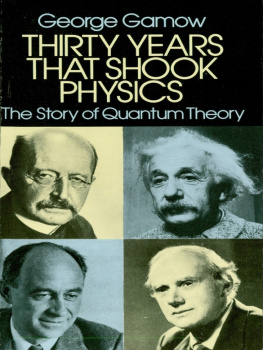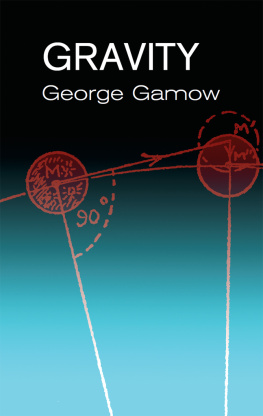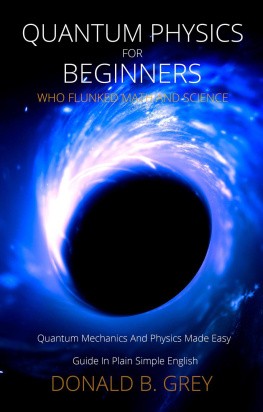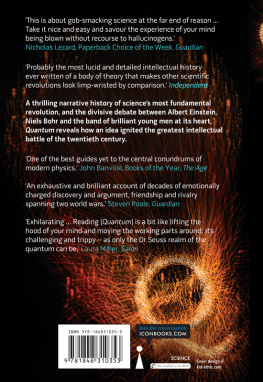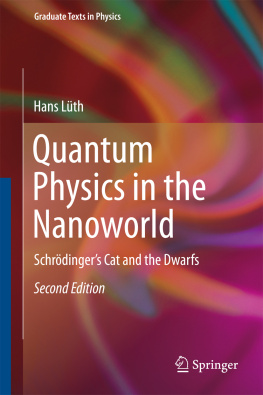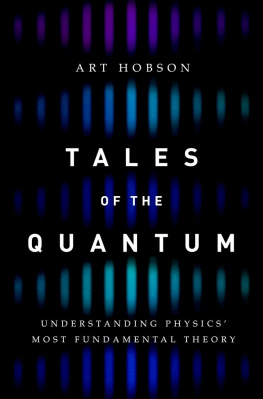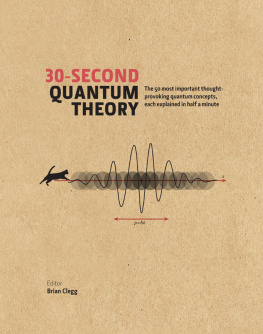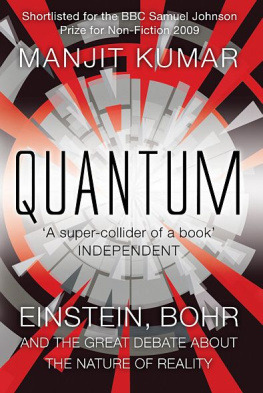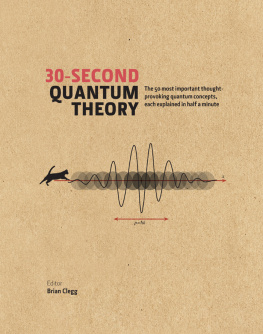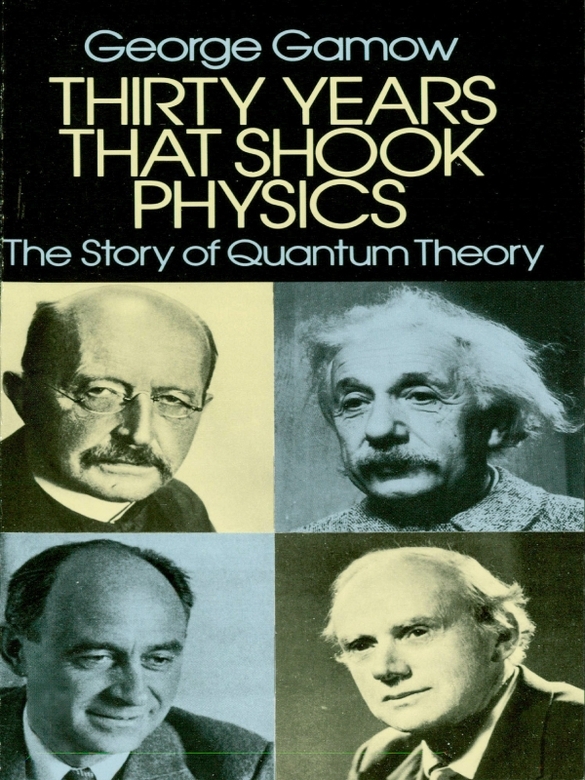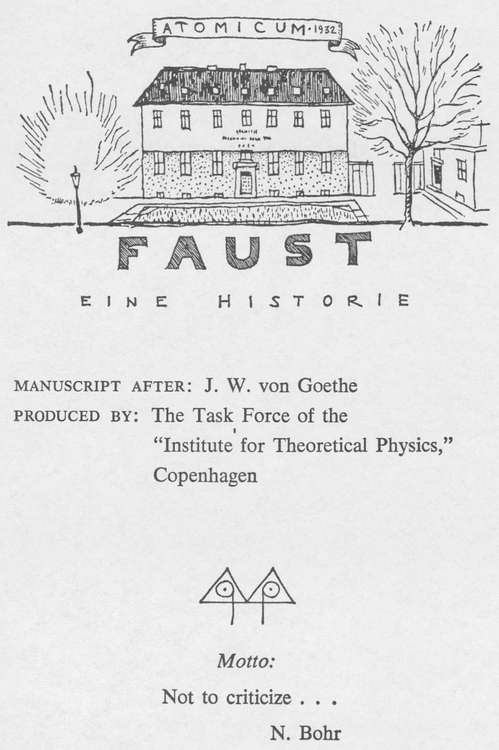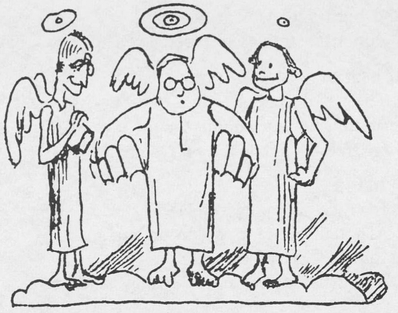PREFATORY REMARKS
The early decades of the present century witnessed the heady development of the Quantum Theory of the atom, and during that era the roads of theoreticians of all nationalities led, not to Rome, but to Copenhagen, the home city of Niels Bohr, who was the first to formulate the correct atomic model. It became customary at the end of each spring conference at Blegdamsvej 15 (the then street address of Bohrs Institute of Theoretical Physics) to produce a stunt pertaining to recent developments in physics. The 1932 conference, which coincided with the tenth anniversary of Bohrs Institute, followed closely on the British physicist James Chadwicks discovery of a new particle having the same mass as a proton but deprived of any electric charge. Chadwick called it the neutron, the name which is now familiar to anybody interested in nuclear physics and in what is called, somewhat incorrectly, atomic energy.
But there was some mixup in terminology. A few years earlier Wolfgang Pauli used the same name for a hypothetical particle which had no mass and no charge and was, in his opinion, necessary to explain the violation of the Law of Conservation of Energy observed experimentally in the processes of radioactive Beta-decay. Paulis Neutron was the subject of hot discussions among the physicists, but these discussions were exclusively oral or carried on by private corre-spondence, and the name was never copyrighted through appearance in any publication. Thus, when the discovery of Chadwicks heavy neutron was announced in his 1932 paper in Nature, the name of Paulis weightless neutron had to be changed. Enrico Fermi proposed calling it the neutrino, which in Italian means a little neutron. In the following translation the name of Paulis neutron in the original text is changed to the present name neutrino, the existence of which had not at that time been demonstrated. Many physicists, especially Paul Ehrenfest, of Leiden, were very skeptical concerning Paulis hypothetical neutrino, and it was only in 1955 that its existence was indisputably proved by the experiments of Fred Reines and Cloyd Cowan, of the Los Alamos Scientific Laboratory.
The pages that follow are the script of a play that was written and performed by several pupils of Bohr and staged at the spring meeting in 1932. (The author of this book was unable to participate in the play, the Soviet Russian Government having refused him a passport to attend the Copenhagen meeting.) The theme of this dramatic masterpiece has Pauli ( Mephistopheles ) trying to sell to the unbelieving Ehrenfest ( Faust ) the idea of the weightless neutrino ( Gretchen ).
The Blegdamsvej Faust, rendered into English by Barbara Gamow, is reproduced in this book as an important document pertaining to these turbulent years in the development of physics. The authors and the performers prefer to remain anonymous, except for J. W. von Goethe. Because of our failure to locate the original author or authors and the original artist, we are suggesting that the publisher deduct an appropriate moiety of the royalties which are to be paid, and hold this amount in escrow for a period of two or three years in the hope that the publication of the book may lead to the discovery of the author and/or artist. Failing that, the sum of money could be presented to the Institutes Library for the acquisition of new books.
Thanks are due to Professor Max Delbriick for his, kind help in the interpretation of certain parts of the play.
G.G.
In the German text of this physics Faust, Goethes rhythms and rhyme schemes (see comparable passages in the original Faust) were followed closely but not exactly. Certain poetic license has been taken here too, with the result that this English version falls somewhere between the other two. Unfortunately, some of the lines from the original Faust, which were used verbatim in the German physics version, could not be used here. Also, there were a few puns in the German language for which it was necessary to attempt English substitutions. Some of the passages in prose in the German physics version have here been converted into verse and appear as speeches by the Master of Ceremonies. This was with the idea of making this Faust more playable on the stage.
There is an amusing confusion of identity throughout: Gretchen is at times referred to as Gretchen and at other times as The Neutrino; Faust sometimes as Faust and at other times as Ehrenfest. But it all adds to the fun, and nobodys the worse for it.
And by the way, if this should be played on the stage, it would seem a good idea for the different minor characters (be they Human or Physical Concepts) to wear signs indicating who they are: Slater, Darwin, The Monopole, The False Sign, etc. Otherwise, the audience will be hopelessly muddled.
B.G.
WHOM THE CHARACTERS REPRESENT
( Note: the Master of Ceremonies is played by Max Delbrck, German physicist)
| ARCHANGEL EDDINGTON | A. Eddington, British astronomer |
| ARCHANGEL JEANS | J. Jeans, British astronomer |
| ARCHANGEL MILNE | E. A. Milne, British astronomer |
| MEPHISTOPHELES | W. Pauli, German physicist |
| THE LORD | Niels Bohr, Danish physicist |
| THE HEAVENLY HOSTS | Extras |
| FAUST | P. Ehrenfest, Dutch physicist |
| GRETCHEN | The Neutrino |
| OPPIE | R. Oppenheimer, American physicist |
| A TALL MAN | R. C. Tolman, American physicist |
| MILLIKAN-ARIEL | R. A. Millikan, American physicist |
| LANDAU (DAU) | L. Landau, Russian physicist |
| GAMOW | G. Gamow, Russian physicist |
| SLATER | J. C. Slater, American physicist |
| DIRAC | P. A. M. Dirac, British physicist |
| DARWIN | C. Darwin, British physicist |
| FOWLER | R. H. Fowler, British physicist |
| FOUR GRAY WOMEN | The Gauge Invariant, Fine Structure Constant, Negative Energy, Singularity |
| FRIENDLY PHOTOGRAPHER | A friendly photographer |
| WAGNER | J. Chadwick, British physicist |
| MYSTICAL CHORUS | Everybody who can sing |
The Blegdamsvej
Faust
The THREE ARCHANGELS, THE LORD, THE HEAVENLY HOSTS, and MEPHISTOPHELES
ARCHANGEL EDDINGTON
As well we know, the Sun is fated
In polytropic spheres to shine;
Its journey, long predestinated,
Confirms my theories down the line.
Hail to Lematres promulgation
(Which none of us can understand)!
As on the morning of Creation
The brilliant Works are strange and grand.
ARCHANGEL JEANS
And ever speeding and rotating,
The double stars shine forth in flight,
The Giants brightness alternating
With the eclipses total night.
Ideal fluids, hot and spinning,
By fission turn to pear-shaped forms.
Mine are the theories that are winning!
The atom cannot change the norms.
ARCHANGEL MILNE

